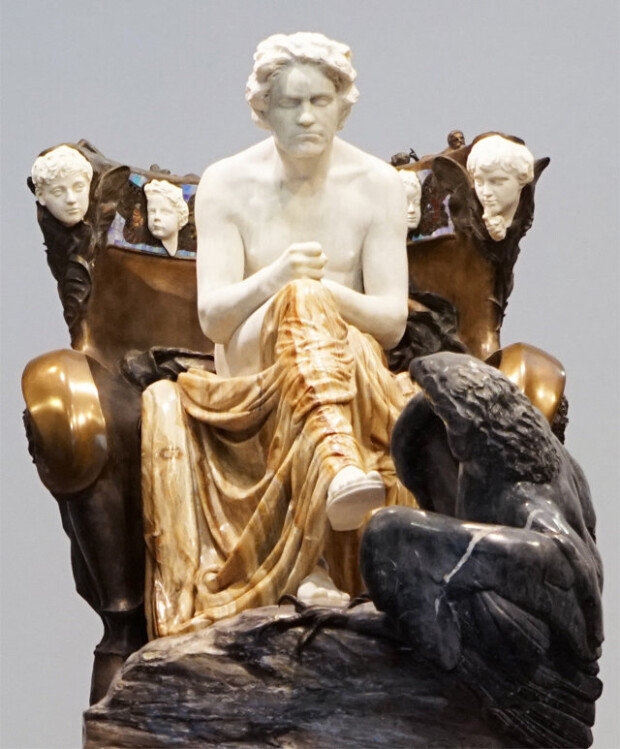Homage to Beethoven’s Symphony No. 9
Homage to Beethoven’s Symphony No. 9
Posted December. 31, 2020 07:36,
Updated December. 31, 2020 07:36

A special exhibition to commemorate the 75th anniversary of the death of Ludwig van Beethoven was held in the Secession building in Vienna, Austria in 1902. It was the 14th group exhibition by the Vienna Secession, which was formed for progressive art. The group’s leader, Gustav Klimt, presented the “Beethoven Frieze,” a mural to visualize Symphony No. 9, which was Beethoven’s last piece. A total of 21 artists from Vienna participated in the exhibition while its main artist was German. Klimt’s mural was also intended to complement the main artist’s work. It was Max Klinger who was as well-known as Klimt during his lifetime but almost forgotten outside Germany after his death.
Klinger who was born in Leipzig, Germany in 1857 was a well-known painter and print artist who showcased his works in Paris, Vienna, Rome, etc. After returning to his hometown at the age of 40, he focused on experimental sculpture. His new piece to be displayed at the exhibition was an over-three-meter-tall full-length sculpture of Beethoven. The sculpture of Beethoven sitting naked with a hunched back in a large throne looks like a frail human or a ghost. The black eagle and decorations on the throne look mysterious. The colors and materials used for the sculpture are also unusual – rather than using bronze or marble in a single tone, Klinger chose a combination of different materials, such as marble in white, yellow, and black, ivory, bronze, etc.
Once revealed, many criticized the sculpture for being inappropriate as a praise for the great composer. “It is a craft, not art,” said critics. Only a few praised it for depicting the real heroic essence of Beethoven – vulnerable but overcoming hardships. In fact, Beethoven composed Symphony No. 9 while experiencing severe hearing issues.
An eagle symbolizes a Roman emperor and John the Apostle, the writer of the Gospel of John who emphasizes love. Klinger was expressing his respect through the eagle in his sculpture to the maestro of the great music that spread across the world like the Gospel. The combination of different colors and materials was a true homage to the choral Symphony No. 9 with a message of love for humanity and harmony.



![“마두로 뒤이은 로드리게스, 냉혹하고 권모술수 능한 공작가”[지금, 이 사람]](https://dimg.donga.com/c/138/175/90/1/wps/NEWS/IMAGE/2026/01/06/133097959.3.jpg)
![[단독]‘아들 주택 11채’ 김경, 공천 보류됐다 강선우가 밀어붙여 구제](https://dimg.donga.com/c/138/175/90/1/wps/NEWS/IMAGE/2026/01/07/133103173.6.jpg)


